Parade Helmet Fragment
Ancient roman, 1st century A.D.
Bronze, dark green patina, with encrustation
(wall mounted and with stand),
17.6 cm wide
Provenance:
German art market, 2002;
With Jean-David Cahn AG, Basel, 2008;
Private collection Switzerland;
With Cahn International AG, Basel, 2018;
Private collection, London - purchased from the above at TEFAF Maastricht 2018
(with original invoice);
Exhibited:
Cahn, Tefaf Maastricht, 2018
£8, 750
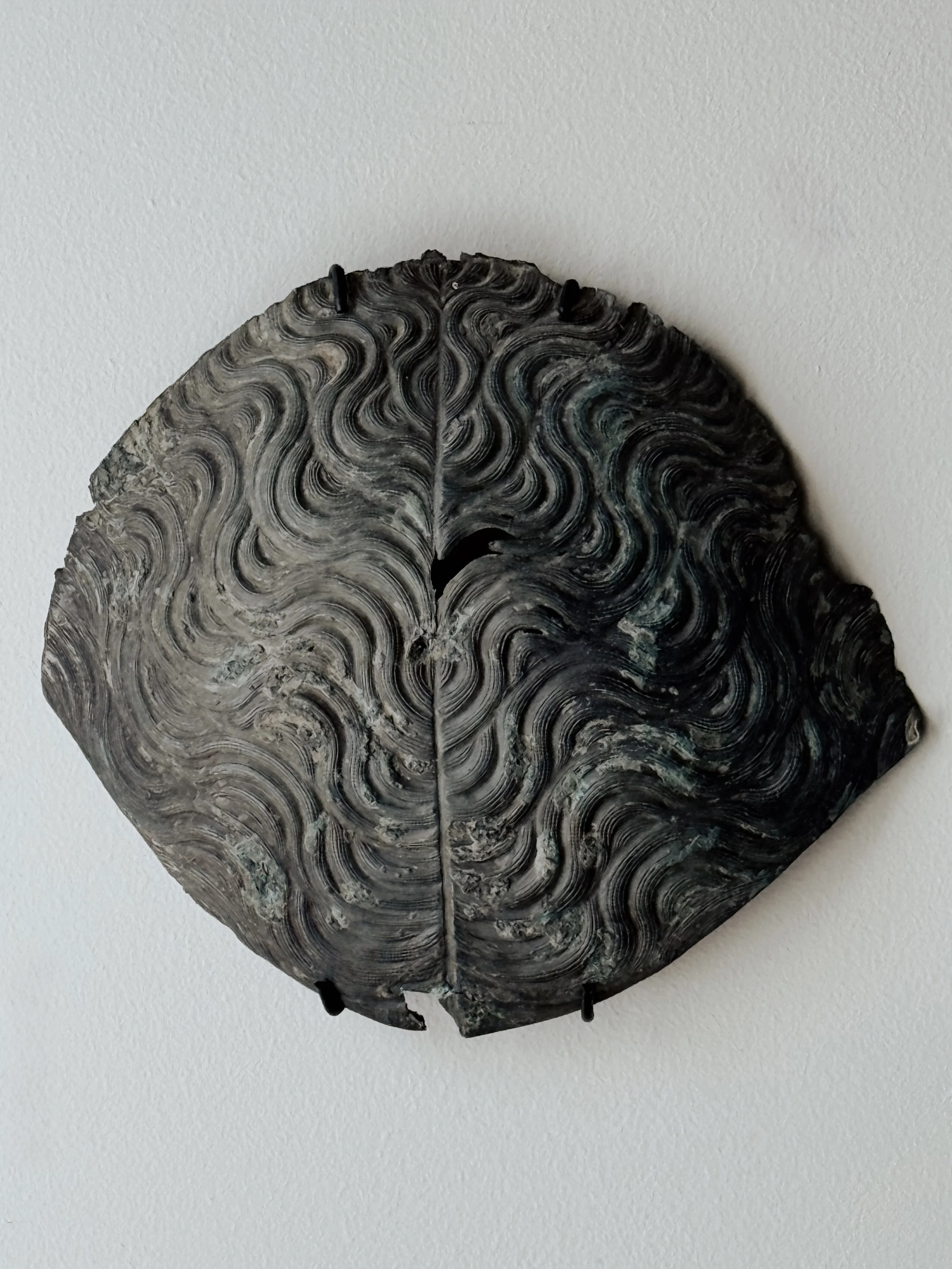
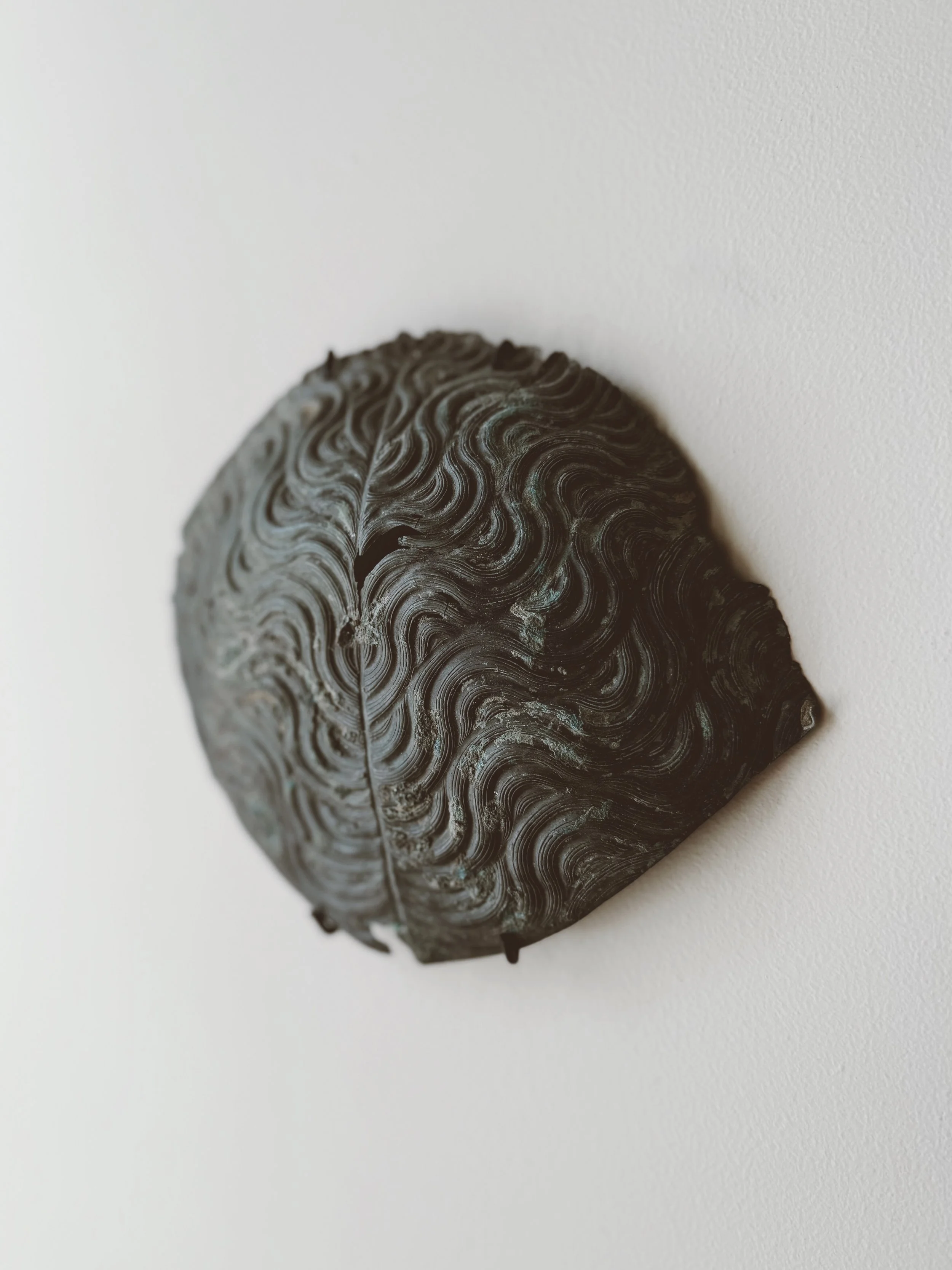
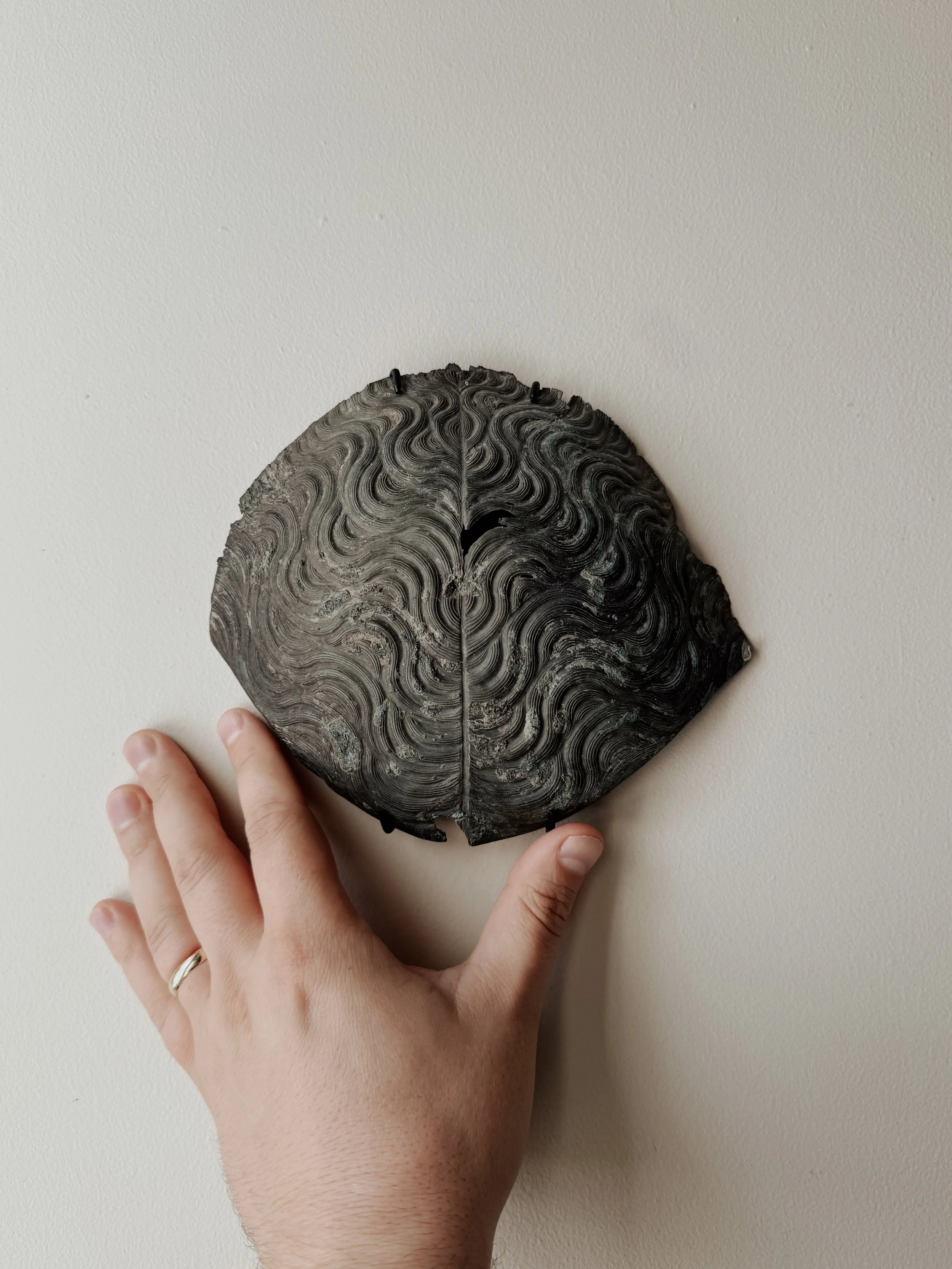
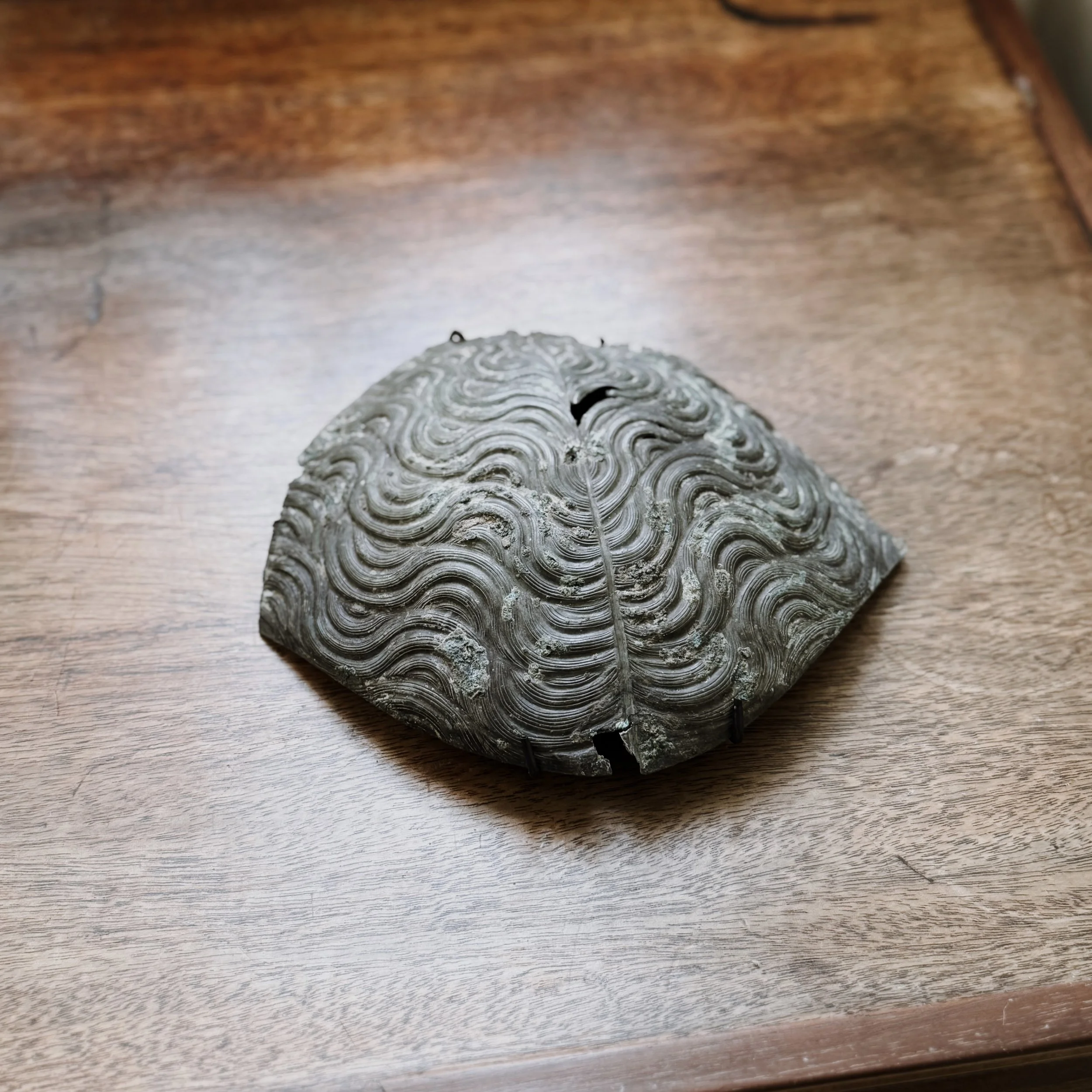

"From the helmets hang plumes of yellow hair, not for any practical purpose but to make a fine show; and when the horses charge, if there happens to be even a slight breeze, they present a splendid spectacle when borne aloft by the breeze, small though it may be."
- Arrian, Ars Tactica, 34.4
This exquisite fragment of a Roman parade helmet would have covered the crown of the wearers head and have been joined at the front to a visor - likely in the form of a face mask with narrow cut-outs for eyes. This finely modelled, cast and chased section of his has been made from a single sheet of bronze that is only 1 mm thick.
Roman parade helmets were often worn by mounted cavalry soldiers and featured idealised representations of hair. They are among the most visually compelling and conceptually rich artefacts to survive from the ancient world. Their rarity, artistic refinement, and symbolic complexity make them of profound importance to scholars of Roman imperial culture, identity, and military practice. Finely crafted with ornate details, they were not made for combat, but rather for ceremonial display—especially during hippika gymnasia, or the roman cavalry sports games. The design of these helmets merged martial prestige with theatrical spectacle, as described in the 2nd century A.D. by the Roman historian Arrian in ‘Ars Tactica’:
"From the helmets hang plumes of yellow hair, not for any practical purpose but to make a fine show; and when the horses charge, if there happens to be even a slight breeze, they present a splendid spectacle when borne aloft by the breeze, small though it may be." - Arrian, Ars Tactica, 34.4
(‘Ars Tactica’ was a military treatise that focussed on military tactics, specifically Roman cavalry and infantry formations, drawing on both Macedonian and contemporary Roman practices. The work is considered a valuable source for understanding Roman military organization and training, particularly the training exercises for Roman cavalry.)
Distinguished from utilitarian armour by their full-face masks and high-level of decoration, these helmets typically include exquisitely modelled hair that was cast in bronze and then meticulously chased. In many cases, the representation of hair serves not only to naturalise the mask but also to idealise it, evoking deities and mythic heroes. The effect is one of transformation: the wearer becomes an icon of Romanised virtue, imperial grandeur, or divine affiliation.
The most famous example in the UK is perhaps the Ribchester Helmet, discovered in 1796 in Lancashire and now in the British Museum. Fashioned in bronze and originally tinned, it features a finely wrought face framed by luxuriant repoussé hair, once paired with an elaborate crest. Its discovery marked the beginning of scholarly fascination with Roman parade armour in Britain and beyond. Another is the Newstead Parade Helmet, that is made from iron and held by the National Museums of Scotland.
In Europe, there exists a suite of comparable helmets attests to the wide geographical reach and symbolic consistency of the tradition. Among the most significant are the Nijmegen Helmets, held in Museum Het Valkhof in the Netherlands. Found near a major Roman cavalry base, these examples include male and female-faced masks with diadems and stylised hair, evoking themes of martial performance and divine impersonation.
These helmets are exceptionally rare: only a few dozen are known, and complete examples with well-preserved hair detail are fewer still. Their distribution, from Britain to the Balkans, illustrates not only the diffusion of Roman military spectacle but also the localisation of Roman imperial aesthetics across diverse cultural zones.
To scholars, these artefacts offer vital insights into the performative aspects of Roman military life, the aesthetics of elite identity, and the role of material culture in projecting power. The artistic treatment of hair—at once intimate and ideological—renders these helmets potent emblems of Rome’s visual and political imagination.

Ribchester Helmet, Ancient Roman, 1st - 2nd century A.D. Bronze, 30 cm high. British Museum, London (1814,0705.1)

(side) Ribchester Helmet, Ancient Roman, 1st - 2nd century A.D. Bronze, 30 cm high. British Museum, London (1814,0705.1)

Newstead Parade Helmet, Ancient Roman, 1st century A.D., Iron, 18 cm high. National Museums of Scotland. (FRA 121)
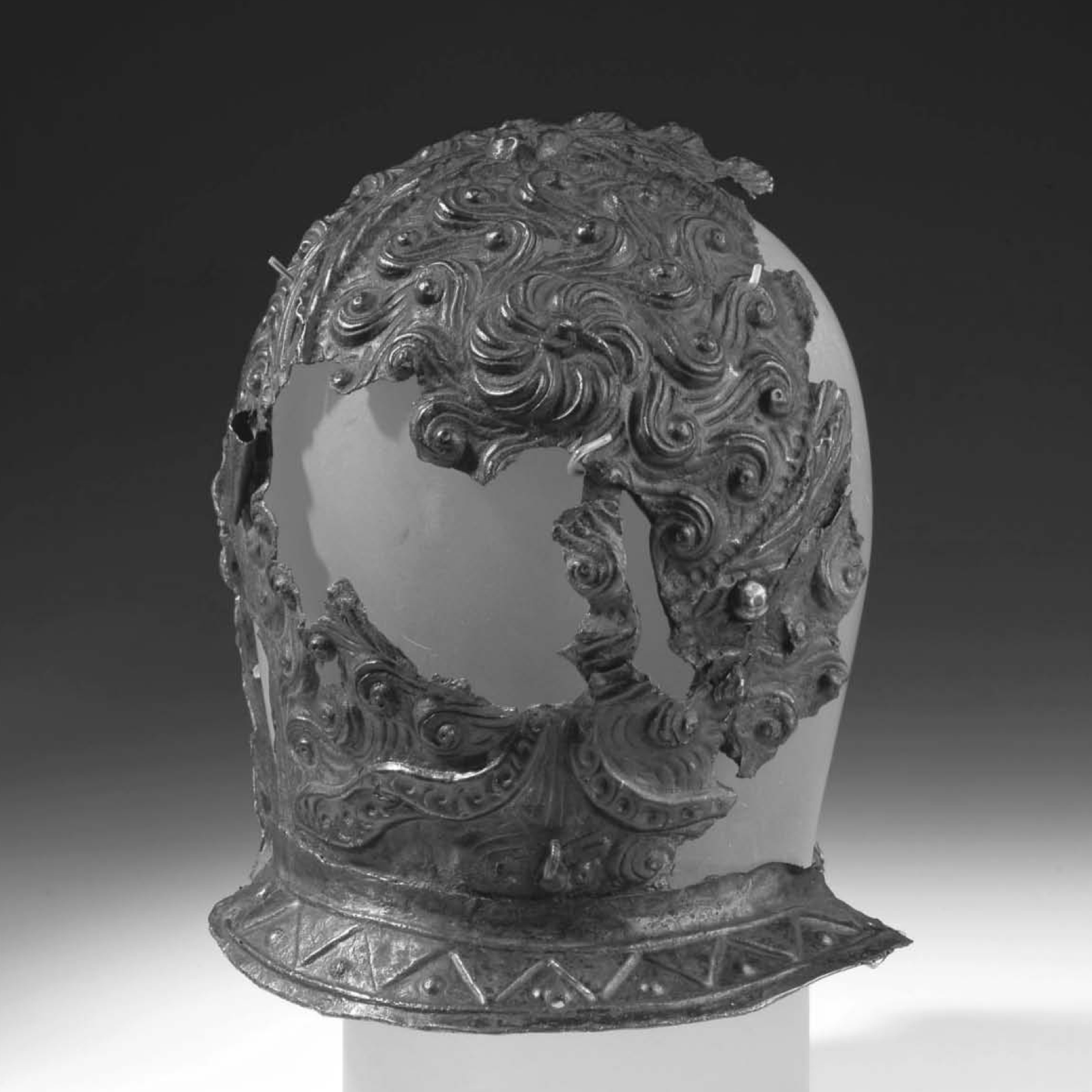
(verso) Newstead Parade Helmet, Ancient Roman, 1st century A.D., Iron, 18 cm high. National Museums of Scotland. (FRA 121)

Cavalry helmet with face mask (A Nijmegen helmet), Ancient Roman 50 - 99 A.D., Iron, bronze, silver and gold, 24.2 cm x 22.8 cm. Valkhof Museum, Nijmegen, Netherlands (XXI.1.4)
